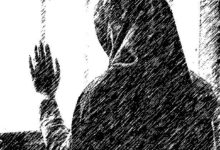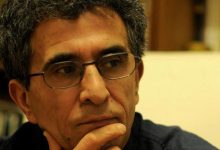Witness Statement: Houshang Bouzari
Houshang Bouzari, a Ph.D in physics from Turn University, former Advisor to Iran’s Oil Minister on international affairs and Iranian ambassador to Venezuela in 1984, describes the formation of the parallel intelligence agencies during the reform period of President Khatami.
Full Name: Houshang Bouzari
Date of Birth:
Place of Birth: Tehran, Iran
Occupation: Businessman; Former Advisor to Iran’s Oil Minister
Interviewing Organization: Iran Human Rights Documentation Center (IHRDC)
Date of Interview: April 17, 2008
Interviewer: Habib Rahiab
Witnesses: N/A
This statement was prepared pursuant to a telephonic interview with Mr. Houshang Bouzari, a businessman and former advisor to Iran’s Minister of Oil in the 1980s. The statement consists of 8 paragraphs and 3 pages. The interview was conducted on April 17, 2008.
Amaken and its Background
1. The full name of Amaken is the General Directorate for Supervising Public Premises. Amaken’s task is different from the Committee for Vice and Virtue. They are two different task forces with two different mandates. While both task forces are active under the auspices of the Law Enforcement Forces, they have different responsibilities.
2. The Committee for Vice and Virtue Committee is called “Idarihyyih Munkerat,” and the General Directorate for Supervising Public Premises is called Amaken. The Committee for Vice and Virtue monitors citizens’ public interactions with one another – especially those between members of the opposite sex. Amaken, on the other hand, mainly monitors activities in public and private premises.
3. The General Directorate for Supervising Public Premises did not exist before the revolution. There was, however, a small unit called “Public Safety” (in mayoral offices) that had the authority to monitor activities in public and private places before the revolution. This unit was responsible for regulating activities (such as playing loud music) that disrupted the lives of people in the community.
4. Amaken was established after the revolution. The Revolutionary Committees established in the 1980s needed an office with jurisdiction to search, raid and arrest members of groups such as the communists, the Mujahedin-i Khalq and opposition political parties that operated underground. While Amaken was actually established for this purpose, it has an official mandate to monitor public and private premises.
5. Amaken required landlords to report the identity and occupation of people renting their property. This was an effective counter-revolutionary approach. The Revolutionary Committees succeeded in identifying, arresting and targeting members of opposition parties who opposed the established system.
6. After suppressing the opposition movements of 1985 and 1986, the regime did not disband Amaken. The organization remained intact, as did the rest of the Revolutionary Committee. In late 1989, Amaken officially came under the authority of the Law Enforcement Forces.
7. Amaken’s officers do not always wears uniforms, with the exception of senior officials working in their offices. Amaken and the Committee for Vice and Virtue officers are generally plainclothes men. They usually ambush their targets and charge them with various offenses. The current head of Amaken is Sardar Muhammed Ali Najafi. He was appointed by President Ahmadinejad in 2005.
8. Amaken is not an important or powerful organization within the Law Enforcement Forces. It has a simple, ordinary office on Ostad Motahari Street. When the Parallel Intelligence Apparatus was established, it easily exploited this body and used its office to interrogate dissidents like Siamak Pourzand. The extra-legal activities that took place in the Amaken offices were conducted in Amaken’s name alone. In reality, though, these operations were overseen by senior intelligence figures purged from Ministry of Intelligence after the “Chain Murders.”






